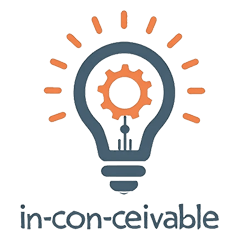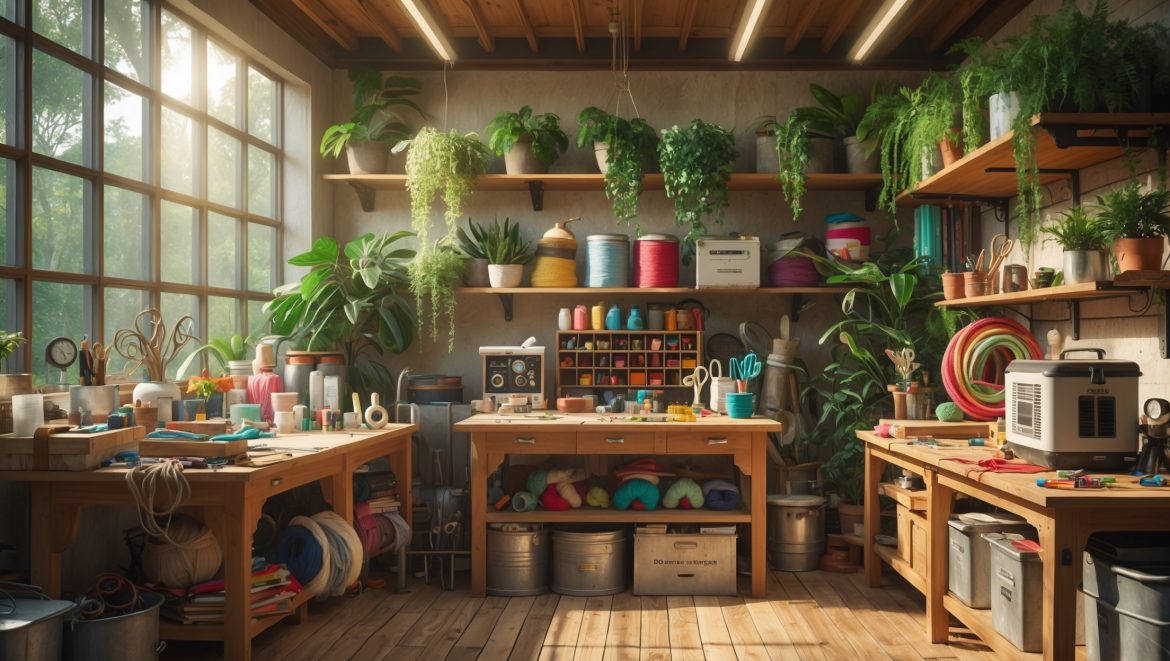Introduction: Why Power Backup Matters in Your DIY Craft Studio
Every creative knows the frustration of losing momentum during a project — and nothing halts inspiration faster than a sudden power outage. Whether you’re in the middle of an intricate papercraft, running a laser cutter, or simply relying on adequate lighting to work on fine details, your DIY craft studio depends on a steady power supply. Yet, power interruptions are a reality for many, whether caused by storms, grid maintenance, or overloaded circuits.
For DIYers and craft entrepreneurs alike, power loss isn’t just an inconvenience; it can mean wasted materials, missed deadlines, or even damage to expensive tools and unfinished projects. That’s why investing in a reliable backup power solution is not just a luxury—it’s a practical necessity for any well-equipped craft studio.
This comprehensive guide walks you through the best backup power strategies for craft studios of all sizes and budgets. We’ll cover types of backup systems, step-by-step setup tips, cost considerations, safety essentials, and regular maintenance to ensure your studio stays powered — and your creativity uninterrupted — no matter what.
Understanding Power Needs in a Craft Studio
Calculating Your Studio’s Power Requirements
Before choosing a backup solution, you need to know how much power your craft studio actually uses. Start by listing all essential equipment:
- Lighting (task lamps, overhead lights)
- Power tools (sewing machines, glue guns, rotary tools, 3D printers, etc.)
- Computers or tablets for design work
- Environmental controls (heaters, fans, air purifiers)
Check the wattage of each item (often listed on the plug or manual). Add these up to determine your total wattage. For safety, add a 20% buffer to account for surges and future tool additions.
Identifying Critical Loads
Not everything needs to stay on during an outage. Identify the absolutely essential tools and systems you can’t work without. This will help you size your backup system appropriately and avoid overspending.
Types of Power Backup Solutions
Uninterruptible Power Supplies (UPS)
A UPS is a battery-powered device that provides instant backup during short outages or surges. It’s ideal for:
- Computers and sensitive electronics
- Small tools and lighting
- Preventing data loss during brief interruptions
UPS units come in various sizes, from desktop models (300–1000VA) to large, rack-mounted systems. For most craft studios, a mid-sized UPS (1000–2000VA) will keep key devices running for 10–60 minutes—long enough to save work or safely power down.
Portable Generators
For longer outages, a portable generator is a practical choice. Options include:
- Gasoline Generators: Affordable and widely available, but noisy and require proper ventilation.
- Inverter Generators: Quieter, with stable power output suitable for sensitive electronics.
- Dual-Fuel Generators: Can run on gasoline or propane for added flexibility.
Choose a generator with enough wattage to cover your critical load list. Remember that some tools (like compressors or large power tools) have a higher starting wattage than running wattage.
Battery Backup Systems
Modern battery backup systems offer quiet, reliable, and maintenance-free power. These can be as simple as a high-capacity power bank or as advanced as a whole-studio lithium battery system.
- Portable Power Stations: Handy for small studios and can power lights, laptops, and a few tools for several hours.
- Wall-Mounted Battery Systems: More expensive, but can be integrated into your studio’s electrical system for seamless, automatic backup.
Battery systems can also be paired with solar panels for sustainable power, especially useful for studios in remote or off-grid locations.
Manual Transfer Switches
If your studio is in a separate building or has its own circuit, installing a manual transfer switch allows you to safely connect a generator to your studio’s electrical panel. This eliminates messy extension cords and can power your entire workspace.
Cost Breakdown and Budgeting
Initial Investment vs. Long-Term Savings
Backup solutions range widely in cost:
- UPS units: $75–$350
- Portable generators: $400–$2000 (plus fuel)
- Battery backup systems: $400–$5000
- Transfer switch installation: $300–$800 (professional installation recommended)
Consider not only the upfront cost, but also long-term benefits: safeguarding valuable tools, preventing ruined projects, and avoiding lost income from downtime.
Budget-Friendly Power Backup Tips
- Start small: Begin with a UPS for your computer and lights, then add a generator or battery system as your needs grow.
- Look for refurbished or gently used backup units from reputable sellers.
- Take advantage of utility company rebates for installing energy-efficient or renewable backup systems.
Step-by-Step: Setting Up a Backup Power System
Step 1: Assess Your Space and Requirements
Map out your studio’s layout and note where your most critical equipment is located. Measure available space for backup units, ensuring proper ventilation for generators and clearance for batteries.
Step 2: Choose the Right Backup Solution
Base your choice on your calculated power needs, budget, and whether you need portable or permanent backup:
- For small studios: A mid-sized UPS and portable power station may suffice.
- For larger studios or high-power tools: Consider a generator with a transfer switch or a wall-mounted battery system.
Step 3: Safe Installation
Always follow manufacturer instructions. For generators and transfer switches, hire a licensed electrician to ensure compliance with local codes and to protect your studio from fire hazards. Battery systems should be mounted securely and away from extreme temperatures or moisture.
Step 4: Test and Train
Test your backup system monthly. Practice switching to backup power so you’re prepared when an outage occurs. Label critical circuits and train anyone who uses your studio on safe operation procedures.
Safety Essentials for Backup Power in Craft Studios
Generator Safety
- Always operate generators outdoors and away from windows or doors to prevent carbon monoxide buildup.
- Never plug a generator directly into a wall outlet; use a transfer switch or proper extension cords.
- Store fuel in approved containers, away from heat sources.
Battery System Precautions
- Keep batteries dry and away from flammable materials.
- Follow manufacturer guidelines for charging and discharging.
- Install smoke and carbon monoxide detectors in your studio.
General Electrical Safety
- Never overload backup systems beyond their rated capacity.
- Use surge protectors to safeguard sensitive electronics.
- Regularly inspect cords, plugs, and outlets for wear or damage.
Maintaining Your Backup Power System
Routine Checks
- Test generators and UPS units monthly by simulating a short outage.
- Check fuel levels and oil in generators; replace as needed.
- Inspect batteries for swelling, corrosion, or leaks.
Annual Servicing
- Replace UPS batteries every 3–5 years or as recommended.
- Have generators professionally serviced annually.
- Update your critical load list as you add or remove studio equipment.
Integrating Solar Power: A Sustainable Option
Pairing battery backup with solar panels can make your studio resilient and eco-friendly. While the upfront cost is higher, solar reduces your energy bills and ensures you can keep working even during extended outages. Many modern battery systems are designed to integrate seamlessly with solar input, providing automatic charging and switchover.
- Consult a licensed solar installer for system sizing and installation.
- Consider portable solar panels for flexible, modular setups in smaller studios or rental spaces.
Frequently Asked Questions
How long will a backup power solution last during an outage?
This depends on your system’s capacity and your studio’s power draw. A medium UPS may last 30–60 minutes, while a generator or full battery setup can power essentials for several hours to days with proper fuel or solar input.
Can I run high-powered tools on backup systems?
Yes—if your generator or battery system is sized appropriately. Always check starting and running wattage for large tools and consult with an electrician for safe setup.
Is a backup system worth it for home-based hobbyists?
If power interruptions are rare and your projects are low-stakes, a simple UPS may suffice. If you sell your crafts, use expensive equipment, or live in an outage-prone area, a more robust backup system is a solid investment.
Conclusion: Empower Your Creativity with Reliable Backup
Power interruptions can derail even the most inspired creative sessions, but they don’t have to. By understanding your craft studio’s unique power needs and investing in a sensible backup solution—be it a UPS, generator, battery system, or even solar—you’ll keep your projects, tools, and inspiration safe from the unexpected.
Don’t wait for the next outage to realize the importance of backup power. Start by identifying your essential equipment and researching suitable solutions for your budget and space. Remember: regular maintenance and safe installation are just as crucial as choosing the right system. If you’re unsure, consult with a licensed professional to ensure your backup system meets both your creative and safety needs.
With a reliable power backup plan in place, you’ll never have to worry about unfinished projects, lost work, or ruined supplies due to sudden outages. Instead, you can focus on what matters most: bringing your creative visions to life, no matter what happens outside your studio walls.



How do you recommend balancing cost and reliability when choosing between portable battery backups and generator systems for small craft studios? I’m concerned about budget but also want to avoid any risk of damaging my equipment during outages.
For small craft studios, portable battery backups are generally safer for sensitive equipment, as they offer clean, stable power and require less maintenance. While generators can be more cost-effective for long outages, they may produce power surges unless paired with an inverter. If budget is tight, start with a quality battery backup for essential devices, and consider a generator as a supplement only if you regularly experience lengthy power cuts.
How do you recommend prioritizing which craft tools should be connected to the backup power system when the total wattage of my studio is more than the backup solution can handle during an outage?
Start by listing all your essential tools and their wattage. Prioritize equipment that’s absolutely necessary for safety and to keep critical work going, like task lighting, glue guns, or ventilation fans. Less essential or high-wattage items, such as large cutting machines, can wait until power is restored. This approach ensures your most vital activities can continue during an outage.
Once I’ve identified my critical loads, how often should I revisit and update that list as my studio grows or my projects change?
It’s a good idea to review your list of critical loads at least once or twice a year, or whenever you add new equipment or start different types of projects. This way, your power backup setup always matches your current needs and you won’t miss protecting any essential tools.
If someone wanted to upgrade from a basic battery backup to something more robust as their studio grows, what steps or signs should they look for before making the switch?
You should consider upgrading your power backup when you start using more equipment, notice frequent power interruptions, or your current backup can’t handle the studio’s needs—like longer outages or higher wattage tools. Signs include tripping circuits, short backup runtimes, or plans to add heavy-duty machinery. Assess your total power requirements and look for solutions with higher capacity and more outlets before making the switch.